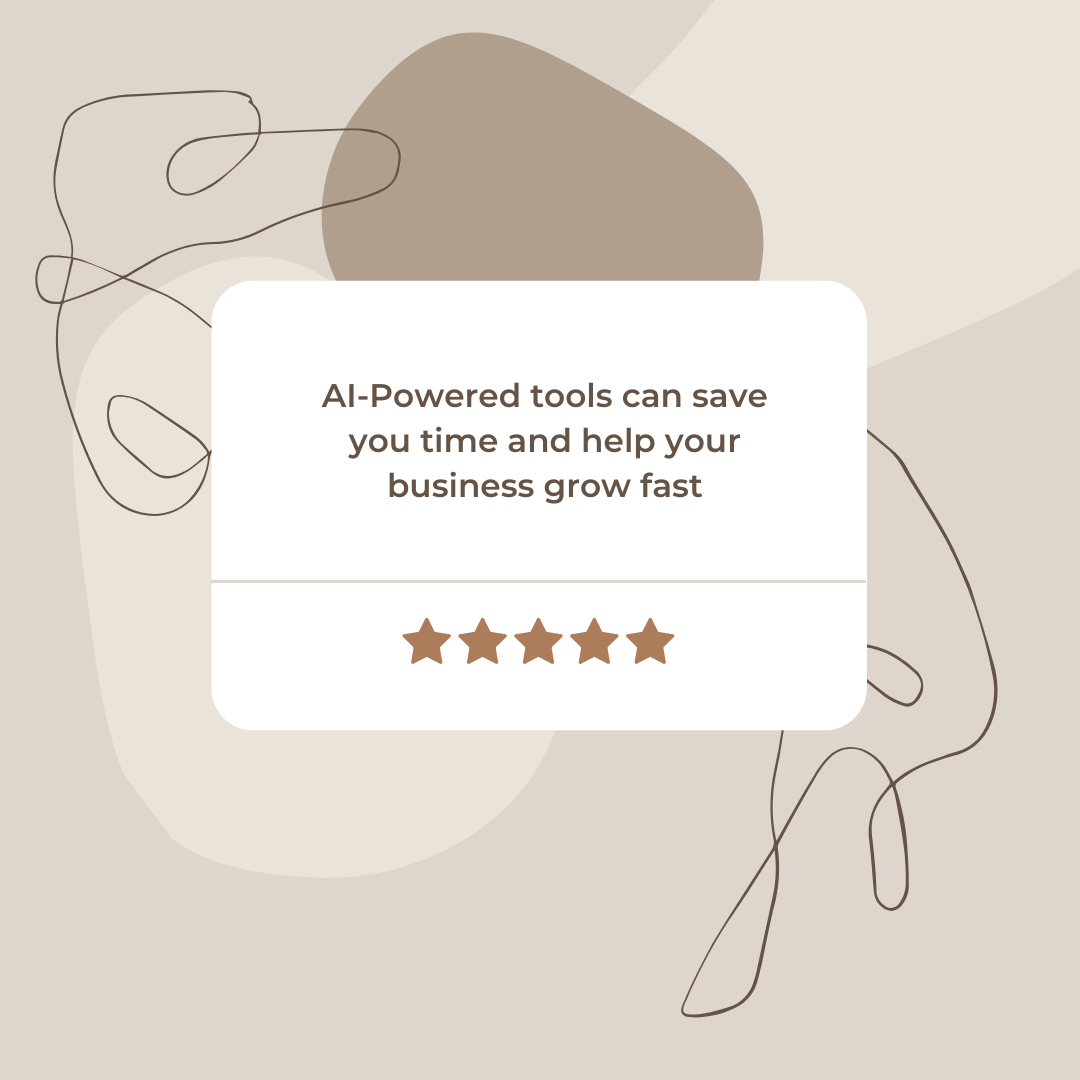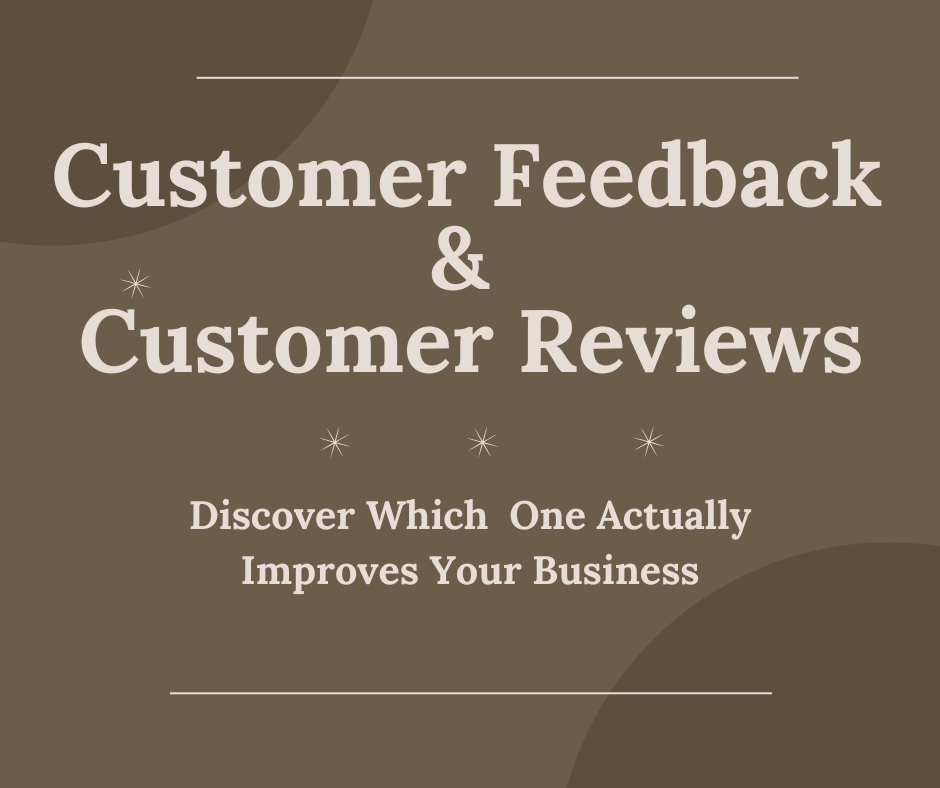91% of small businesses collect customer reviews but ignore customer feedback.
Starbucks found 91 improvement opportunities just by listening to app feedback, not reviews.
While most small business owners chase five-star reviews on Google, they’re missing the hidden goldmine that actually transforms businesses from the inside out. After working with dozens of local business owners, I’ve observed a consistent pattern: those who focus only on public reviews grow slowly, while those who master customer feedback create loyal customers who become walking advertisements. The difference isn’t just semantic; it’s the gap between surface-level marketing and deep business transformation.
Customer feedback and customer reviews serve complementary roles. Today, you’ll discover how to implement both in your business efficiently for sustainable improvement and growth.
This is how we go about it.
Customer Feedback
What It Is
Customer feedback is what your customers tell you directly about your product, service, or business. It could come from a quick survey, a suggestion box, or an AI-powered tool.
This kind of feedback gives you clear customer insight: what they like, what they don’t, and what they want you to fix.
Customer feedback is usually private and honest. It helps you spot problems early and make immediate changes and decisions.
Why Customer Feedback Is Important
Customer feedback helps you understand what your customers really think, not just what they say in public. It’s how you find out what’s working and what needs to change. According to Microsoft, 52% of people around the world believe companies need to act on the feedback they give. Ignoring it could mean losing trust and losing customers.
Customer feedback also helps you increase conversion and boost profit. When you listen and respond, people are more likely to buy again or tell others. A study by Esteban Kolsky found that 13% of unhappy customers will tell 15 or more people about their bad experience, but if you solve their problem, 70% will return.
That’s why real growth feedback is important. It shows you what to fix and what to build on. If you want to improve your business, don’t guess. Ask. Then use the answers to make changes.
How To Gather Customer Feedback Effectively In 2025
1. Customer Surveys
One of the best ways to gather customer feedback is by using simple surveys. Two of the most common ones are NPS (Net Promoter Score) and CSAT (Customer Satisfaction Score).
NPS (Net Promoter Score) asks just one key question: “How likely are you to recommend our business to a friend or family member?” Customers answer on a scale from 0 to 10.
- 9–10 means they love your business (promoters).
- 7–8 means they’re okay with it (passives).
- 0–6 means they’re unhappy (detractors).
You then subtract the percentage of detractors from the percentage of promoters to get your score. It’s quick, and it gives real customer insight.
CSAT (Customer Satisfaction Score) asks how happy customers were with a specific product, service, or experience. You ask: “How satisfied were you with your visit today?” and let them rate it from 1 to 5. You can follow up with a short text box for more detail.
2. Social Media
Social media is one of the easiest ways to get real growth feedback. People already talk about your business and other businesses like yours on Facebook, Instagram, and Twitter; you just have to listen.
Instead of guessing what your customers think, you can find insight in their posts, comments, and tags. Tools like Sprout Social and Hootsuite help you track what people are saying in real time. That’s how brands like Wendy’s and Netflix stay ahead – Hootsuite. They read what customers post, respond quickly, and adjust based on what they hear.
In 2023, a clothing brand called ASOS used Instagram stories to ask customers what styles they liked. The answers shaped their next product line, and sales jumped.
That’s actionable feedback at work. You ask, listen, and use what you learn to improve.
3. Email Follow-ups
Email follow-ups are a simple and smart way to get honest customer feedback. After someone buys from you or uses your service, send them a short email. Ask about their experience and if they’d recommend you. Keep the message short and clear.
One or two questions, for example, “How was your experience with us today?” or “What could we do better?” Give them space to reply, and thank them when they do.
Many businesses use email to improve business with customer insights. In 2022, Airbnb used follow-up emails to ask guests about their stay. Based on feedback, they made changes that boosted guest satisfaction and repeat bookings.
Email works because it feels personal. It shows you care. And the answers you get can lead to better service and better products.
4. In-app Prompts
In-app prompts are questions that pop up while someone is using your app or website. They’re quick, easy, and a great way to get customer insight right when the experience is fresh.
For example, after a customer checks out, you can ask, “How was your shopping experience today?” Or if they use a feature in your app, ask, “Was this helpful?” These simple questions take just seconds to answer, but they give you powerful, actionable feedback.
Many top apps like Uber and Spotify use in-app prompts to collect real-time thoughts. These simple questions help spot problems fast, fix what’s broken, and boost user experience.
5. AI-Powered Tools
AI-powered tools make it easier than ever to collect and understand customer feedback. They help you spot patterns, sort through customer reviews, and turn comments into clear ideas you can use. Instead of reading every message one by one, AI shows you what most people are saying, fast.
One tool made for this is Insight IQ Hub. It’s built for local small businesses that want honest feedback without the stress. It helps you gather customer insight through a simple QR-code placed around your business outlet, and then uses AI to sort the answers into things you can actually fix or improve.
AI-powered tools can save time and help you grow fast.

How Customer Feedback Improves Your Business In 2025
1. Understand What Customers Really Think
If you want to understand your customers better, ask for feedback directly.
When you ask clear questions, your customers will give you honest answers. They’ll tell you how the overall experience was, and point out where you can make adjustments. That kind of feedback gives you real insights.
For local shops, it might be a short question at checkout. For online stores, it could be a quick form after a purchase. Either way, you learn what’s really going on, not just the good or bad, but the reasons behind it.
This helps you fix small problems before they become too big. It also shows your customers that you care, which keeps them coming back.
2. Spot Problems Before They Get Too Big
Customer feedback helps you catch small problems before they turn into big ones. Whether you run a local shop or an online business, listening early can save you a ton of trouble later. Maybe a product has a bug, your checkout line is too slow, or customers find your website hard to use. If you allow your customers to share feedback, they will tell you, and you can fix complaints before they get worse.
This also helps you prevent negative reviews. Most people won’t leave a public review right away, but they’ll share how they feel if you ask. If you take action fast, you turn a bad experience into a good one.
For small businesses, this kind of early feedback is a game changer. It keeps your business running smoothly and shows your customers you’re listening.
3. Make Smart Product and Service Improvements
Customer feedback helps you know what to fix to grow your business. It shows you what to improve, whether it’s your product design, pricing, or how you deliver your service.
One example is Domino’s Pizza. In 2009, customers complained about the taste of their pizza. Instead of ignoring it, Domino’s listened. They changed their recipe based on feedback and launched a campaign saying, “We heard you.” Sales went up, and customer trust was restored. That’s the power of real growth feedback.
For small businesses, the same idea works. A clothing store might learn customers don’t like the fit of a certain item. An online store might hear that checkout takes too long. That kind of product improvement with customer feedback leads to better sales and happier customers.
4. Boost Repeat Sales and Conversions
Happy customers come back, and one of the best ways to keep them happy is by asking for their feedback. When customers feel heard, they’re more likely to trust your business, buy again, and tell others. This is how you increase conversion with customer feedback.
A good example is Zappos, the online shoe store. They collect feedback after every order and use it to train staff and improve their service. As a result, 75% of their daily customers are repeat buyers. That’s not luck, it’s a smart customer retention strategy.
For small businesses, the same approach works. A café might improve its wait times after hearing complaints. An online seller might fix unclear return policies. These small changes lead to better service, which leads to more sales.
5. Gain an Edge Over Competitors
Big companies have more money, but small businesses can move faster, especially when they listen to their customers. When you act quickly on feedback, you improve faster and offer better service. That’s how you beat competition with feedback.
Let’s say you’re the owner of a local bakery, and you know your customers want more dairy-free options. By next week, you add a few to the menu. A bigger chain might take months to do the same. That speed makes your customers notice and come back.
Also, a small online store might fix a slow website or confusing checkout in just a few days after hearing complaints. That quick action keeps customers from leaving.
Feedback gives you real customer insight for growth. It shows what people want, and if you’re fast, you can be the first to give it to them. That’s how small businesses win against bigger ones.
Now, let’s look at customer reviews.
Customer Reviews
What It Is
Customer reviews are public comments people leave after buying from your business. They usually share what they liked or didn’t like about the product or service. You’ll see these reviews on places like Google, Facebook, or online store pages.
Customer reviews help others decide if they want to buy from you. A good review builds trust. A bad one can make someone walk away. That’s why they’re important.
If you want to increase conversion, reviews can help. When people see others had a good experience, they’re more likely to buy.
Why Customer Reviews Are Important
Customer reviews help people decide whether to trust your business. Whether you run a local shop or an online store, what others say about you matters.
According to a 2023 survey by BrightLocal, 98% of people read online reviews before choosing a local business. Even more, 87% said they wouldn’t use a business with low ratings. That’s a big deal.
Good reviews bring in new customers. Bad ones can scare them away. That’s why it’s important to manage your online reputation. Ask happy customers to leave reviews, and always reply, even to the negative ones. It shows you care and are willing to fix problems.
For small businesses, reviews are like word-of-mouth, just online. A few good ones can make a big difference. Don’t ignore them. Use them to build trust, attract more buyers, and grow your business.
How To Gather Customer Reviews Effectively In 2025
Getting customer reviews in 2025 is easier than ever, but you have to ask the right way. Whether you run a local store or an online business, timing and simplicity are key.
Ask right after a sale, when the experience is still fresh. You can send a short email, text, or even a printed card with a QR code. Make it quick, just a star rating and a short comment box. Tools like Google Business, Yelp, or Facebook make it easy.
According to Podium 2024 report, businesses that ask for reviews within 24 hours are 3 times more likely to get one. That’s why asking for a review right after a sale or transaction is very important.
And once you start getting reviews, reply to them, both good and bad. It shows you’re paying attention. It also helps you manage online reputation, build trust, and attract more customers.
How Customer Reviews Improve Your Business In 2025
Customer reviews are more than opinions; they are tools that help your business grow. Here are five ways they make a real difference in 2025:
- They Build Trust
Most people trust public reviews like they trust a friend. A 2023 report found that 46% of consumers trust online reviews as much as personal recommendations. – BrightLocal. When people see good reviews, they feel safe buying from you. - They Increase Conversions
The Spiegel Research Center found that displaying reviews can increase conversion with customer reviews by up to 270%, especially for new or unknown products. Customer reviews reduce doubt and help buyers decide faster. - They Help You Learn
Reading reviews shows you what your customers like and dislike. This gives you real growth ideas; things you can improve or keep doing right. - They Boost Local Search
For local businesses, more public reviews can help you rank higher on Google, making it easier for new customers to find you. - They Show You Care
Replying to reviews, even the bad ones, shows you’re listening. That builds trust and keeps customers coming back.
Customer Feedback And Reviews: How They Compare
Customer feedback and customer reviews are both useful, but they serve different purposes. Knowing the difference helps you use them the right way, whether you run a local shop or an online store. Here’s a simple side-by-side comparison:
| Feature | Customer Feedback | Customer Reviews |
| Who sees it | Private. Just you and your team | Public. Visible to everyone online |
| Purpose | Helps improve your service or product. | Helps others decide whether to buy |
| Timing | Can be collected anytime during the customer journey. | Usually given after a purchase |
| What you learn | Detailed customer insight and reasons behind choices | Quick opinions: likes or dislikes |
| Business benefit | Improved service, real growth, better decisions | Builds trust, helps increase conversions. |
| Reputation impact | Not seen by others. | Important to manage online reputation. |
Turning Customer Feedback And Customer Reviews Into A Growth Strategy
1. Collect Customer Feedback and Reviews
Start by asking for input. Use short surveys, follow-up emails, in-app prompts, or printed cards at checkout. For customer feedback, Insight IQ Hub makes this seamless.
This is how Insight IQ Hub works:
For public reviews, encourage happy customers to leave a review on Google, Facebook, or review sites.
The key is to ask the right questions at the right time. Don’t wait too long. The sooner you ask, the better the answers.
2. Analyze
Look for patterns. Are people complaining about slow service? Confusing prices? A hard-to-find location?
Write down common themes. You’ll often notice the same issues or compliments show up again and again. This is how you turn random comments into clear insight.
3. Prioritize What to Improve First
Not every comment needs action right away. Start with the issues that affect the most people or cause the most problems. For example, if 10 people complain about slow checkout, that’s something to fix immediately.
You can also track your NPS (Net Promoter Score), the score from asking, “How likely are you to recommend us?” If your NPS goes up after making a change, it means you’re on the right track.
4. Communicate
Let your customers know you listened. You can post updates on social media, send follow-up emails, or respond directly to reviews.
Example: “You asked for more payment options, so we added two new ones this week!”
This builds trust and encourages even more feedback and public reviews.
5. Measure the Impact of Changes
Look at your numbers. After making a change based on feedback, ask:
- Are customers buying more?
- Are fewer customers complaining?
- Are public reviews improving?
These small wins show real growth.
6. Use Testimonials to Build Trust
When a customer gives great feedback or leaves a kind review, ask if you can share it. Put these testimonials on your website, flyers, or social media. Real words from real people help increase conversion with customer reviews, because people trust what they see.
Even better, pair a review with a photo or name (with permission). This makes it feel real and honest.
A Case Study: Fiserv’s AI-Powered Customer Feedback Success
Fiserv, a large payment tech company, used AI to study thousands of customer feedback and public reviews.
Fiserv discovered that many client responses to traditional surveys were vague; words like “service” or “pricing” without real detail. Customers often stopped after one-word answers and didn’t share what actually bothered them or what they expected.
To fix this, they quickly added conversational AI through Qualtrics, turning one-way surveys into human-like back-and-forth chats. When someone wrote something short or unclear, the AI asked follow-up questions. This encouraged 40% of respondents to add more detailed feedback
The result?
Their Net Promoter Score (NPS) rose by 10 points across key customer stages. That increase linked directly to better customer retention (keeping more clients) and millions of dollars in added revenue. – Business Insider
Conclusion
Customer feedback and customer reviews work best when used together. Feedback gives you private insight into what’s working and what’s not. Reviews help you build trust and bring in new customers. Both give you the information you need to improve your business.
Here’s what to do next:
- Audit your current setup. Are you asking for feedback? Are you watching your public reviews?
- Use better tools. Simple surveys, follow-up emails, and tools like Insight IQ Hub can help you collect actionable feedback without stress.
- Respond to reviews. Say thank you, fix issues, and show customers you care.
Have questions or thoughts? Share them in the comment box below. We’d love to hear your insight and what’s working for you.
FAQs
What is the difference between customer feedback and customer reviews?
Customer feedback is private and comes from things like surveys or follow-ups. It helps you understand problems and make changes. Customer reviews are public and help potential customers decide if they want to do business with you.
How often should I request feedback and reviews?
Ask for feedback at any stage of the customer journey, but it’s best after a visit, a sale, or a support call. Ask for reviews when the experience was great. Don’t ask too much or too soon.
Can feedback be public? Should negative reviews be deleted?
Feedback is usually private, but you can share it (with permission). Don’t delete negative reviews. Instead, reply kindly and fix the problem.
What’s the easiest way to collect honest feedback without stressing customers?
Use tools like Insight IQ Hub. It helps small businesses ask the right questions at the right time—so you get real answers without annoying your customers.





